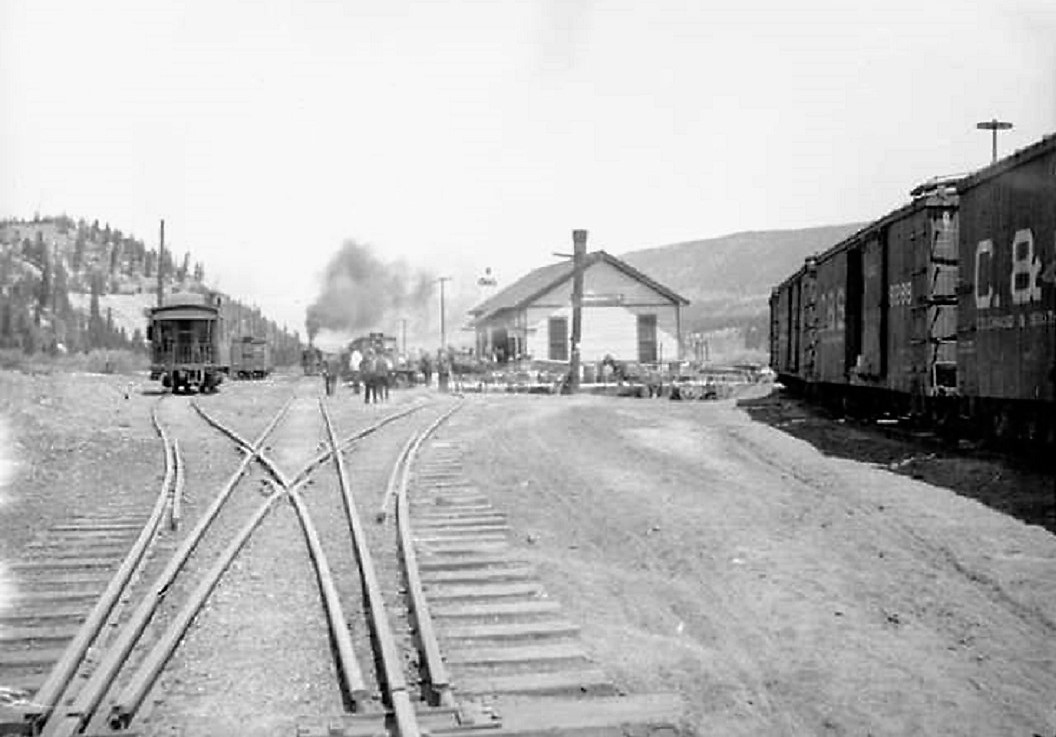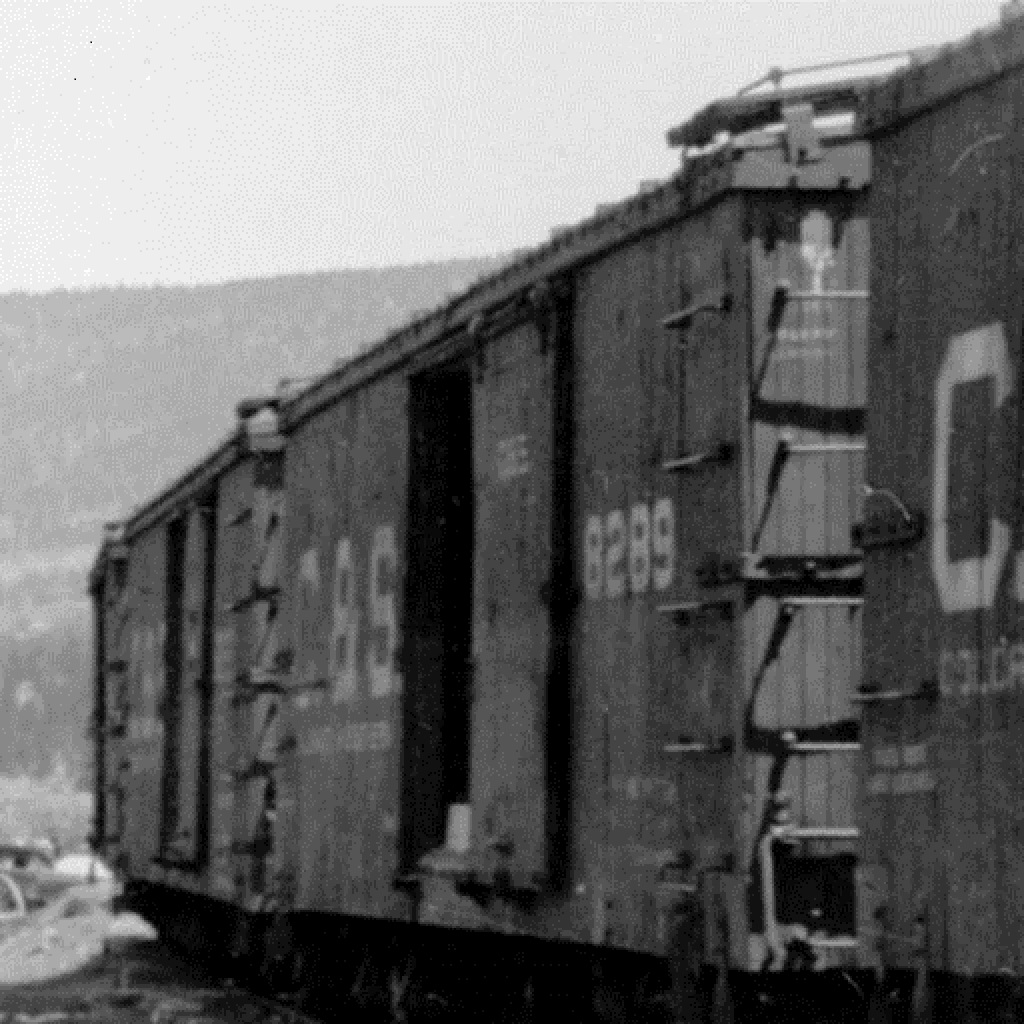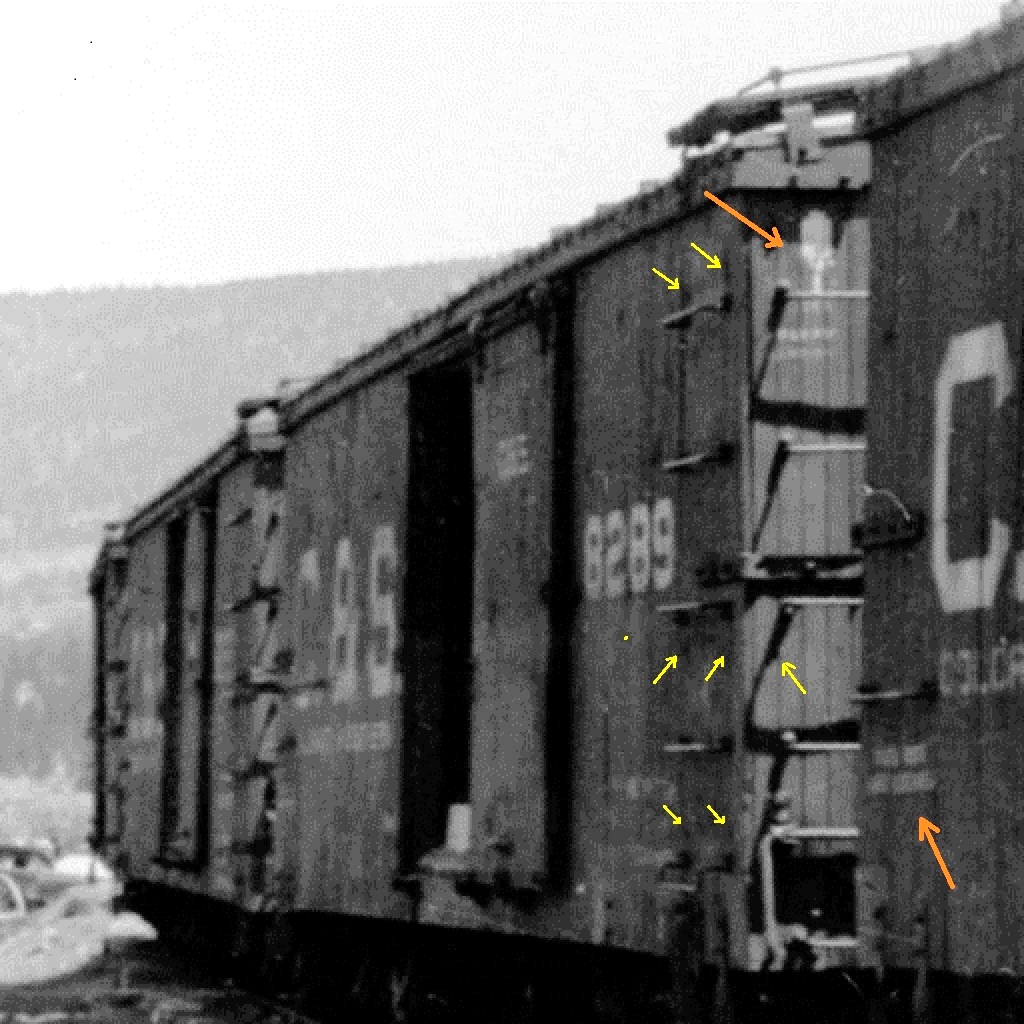C&S Freight Car Repainting Intervals
C&S Freight Car Repainting Intervals
|
This post was updated on .
Most all the "modern" freight cars of the C&S, that survived into the late 1930s/early 1940s, were built between 1907 and 1910 (the exceptions being the St Charles boxcars of 1898 and 1899, the 1900 stock cars and the 1902 coal cars). These 1907-1910 builds were lettered in the block monogram scheme when new.
In 1911, Congress amended the USSA act, to include new directives as to location and number of grab irons, stirrup steps and the need for wood corner platforms on house cars with metal roofs. As the C&S was an interstate carrier, it was forced to comply. Most of the inherited narrow gauge cars from the D&LG / UPD&G were retired at this time and never received the safety appliances. Per Derrell Poole's text in Grandt's Narrow Gauge Pictorial VIII, most narrow gauge freight cars were shopped and refitted with all this new hardware beginning about 1914, with most cars completed by the end of 1916. Now the 1907-1910 freight cars were only 5-7 years old at that time. When shopped were these cars completely repainted and re-lettered in the block monogram scheme? Or were they only subjected to removal and reapplication of hardware, with touch up of the paint? The next and final repainting was to the "button" scheme in 1924-1926. If the block lettered cars were wearing their original as built paint in the mid 1920s, that paint job would be 16 to 20 years old. Consider these two boxcars of 1908 and 1910 spotted on the siding at Baileys in 1926:  Pretty distinct lettering, though weathered. New reweigh data seems to have been applied. And these photos from about 1917 at Breckenridge, show freight cars that are 7-10 years old with pretty fresh looking lettering: http://digital.denverlibrary.org/cdm/singleitem/collection/p15330coll22/id/2480/rec/493  http://digital.denverlibrary.org/cdm/singleitem/collection/p15330coll22/id/2481/rec/356  http://digital.denverlibrary.org/cdm/singleitem/collection/p15330coll22/id/2482/rec/490  I'm beginning to think that these relatively new cars were not only refitted, but possibly re-sheathed and completely re-painted and re-lettered in 1914-1916. On a whim, I've studied all the good, clear photos in my books of the boxcars in the late 1930s. I can find no evidence of the mounting holes for the original grab irons on the sides and ends, suggesting that the holes were filled or that sections of new sheathing was applied. And then there is the weird thing about changing side sheathing. Most C&S new construction of 1907-1910 seems to have been built with 5 1/4" beaded side planks, especially on the 1909-1910 SUF boxcars. But by the 1930s many cars appear to have a wider 6 1/2" inch, grooved side planks (like the typical side sheathing of D&RGW freight cars). The builders photos of the St Charles boxcars show a wide side sheathing in 1899, but by the 1930s many have the typical 5 1/4" C&S style sheathing. Does anyone know for sure, if the C&S freight car fleet was completely repainted in the 1914-1916 USSA shopping?
Jim Courtney
Poulsbo, WA |
Re: C&S Freight Car Repainting Intervals
|
Jim, it does not answer your question, but I have observed a number of block lettered cars in photos dating from the 30s. The lettering ranges from well past due to not so bad. An image taken of a short train at Michigan in Mineral Belt comes to mind. Thus, I have been lettering about 20% of my fleet in block lettering.
Plus it looks cool.
Keith Hayes
Leadville in Sn3 |
Re: C&S Freight Car Repainting Intervals
|
In reply to this post by Jim Courtney
Jim,
Seems unlikely to me that the railroad would wholesale repaint their fleet of cars or even reside on cars that new. Railroads even today like most businesses don't like to spend money unless they absolutely have to do it. Part of the reason we have so many road crossings with poor conditions and very rough on the road vehicles. Railroads won't spend money on the crossings unless forced to in my opinion. I also have to wonder what impact world and national events would have on the mining industry and on the railroads themselves. This is the time around WWI and I wonder if the impact of the war caused an increase or decrease in mining activity and on railroad activity on the C&S narrow gauge in particular. It seems the railroads were usually trying to get out of the narrow gauge railroad business. I could see boards being possibly selectively replaced which might account for the lack of previous hole locations. Now the woodworker in me says that the holes might also have been plugged with wood plugs. And such plugs could quickly be hand planed flush with the face of the board making the plug patch nearly invisible. This would be a good job for a less experienced carpenter, but who knows, right? Best, Todd Ferguson Harrisburg, NC |
Re: C&S Freight Car Repainting Intervals
|
I suspect that you're right, Todd.
And I think I've answered my own question. This 1936 photo is currently listed on eBay: http://www.ebay.com/itm/Railroad-Photo-Leadville-CO-Colorado-Southern-Box-Car-8217-In-1936-/112169995898?hash=item1a1dda4e7a:g:EnkAAOSwpLNYBNar  When I enlarge the right end of the car, I think I can see holes where the original 4 side grab irons were attached:  Same photo marked:  What do ya'll think? Am I seeing things, or what?
Jim Courtney
Poulsbo, WA |
Re: C&S Freight Car Repainting Intervals
|
In reply to this post by Todd A Ferguson
Hi Todd,
Mining (and by extension the railroads) saw a pickup during both wars (particularly molybdenum at Climax, but also zinc and lead from many of the silver-bearing ores). Cheers, Jeff. |
Re: C&S Freight Car Repainting Intervals
|
Jeff, Good input...I wasn't really sure but knew the mining tended to run in cycles like many other industries then and even today. Although today we have much more interference and complexity in markets I believe... So perhaps the narrow gauge then suffered more after WWI through the Great Depression. Picking up some again during WWII perhaps. I guess we would need to look at some records to make a more accurate judgement. Best, Todd Sent from my iPad
|
Re: C&S Freight Car Repainting Intervals
|
The different mining districts were also affected differently. While they all crashed after the war, Climax picked up again in the late 20s and the Clear Creek district in the late 30s. Ten Mile never really recovered, and ended up as a bedroom community for Climax. The Blue River and Alma districts saw a lot of dredging in the 40s and 50s, but that was of course post-railroad.
|
Re: C&S Freight Car Repainting Intervals
|
In reply to this post by Todd A Ferguson
I could see boards being possibly selectively replaced which might account for the lack of previous hole locations.
Now the woodworker in me says that the holes might also have been plugged with wood plugs. And such plugs could quickly be hand planed flush with the face of the board making the plug patch nearly invisible. This would be a good job for a less experienced carpenter, but who knows, right? I thought Todd was likley correct about the holes from the original hardware being just plugged, with the 1936 boxcar above having lost most of the plugs over the years. But in enlarging the 1917 photo above, just after the new safety hardware has been applied:  I think that the holes from the early grab irons remain visible, yellow arrows:  It looks like a small "United States Safety Appliances" stencil has been added to the original block lettering scheme under the new left end of side grab iron (orange arrow). This is also about the only view I've seen that locates the retainer stencil on boxcar ends with the block monogram scheme. So while some holes may have been plugged, others were not. The absence of holes on late 1930s photos might also reflect re-sheathing (complete or partial) in the 1920s or early 1930s, I guess. Thanks for humoring me about this trivia! 
Jim Courtney
Poulsbo, WA |
Re: C&S Freight Car Repainting Intervals
|
Jim,
I agree that probably after 15-20 years the cars would need the siding replaced and that is possibly what happened when they went to the button herald paint scheme in the mid 1920s. The D&RGW also rebuilt and repainted many cars in the 20s and again in the early 20s. I'm sure the tax and accounting rules may have played an important part in these decisions too. I'm sure the railroads would have been just as happy to rid themselves of much or all of the narrow gauge by this point. But there is always the pesty public and shippers forcing the government to force the railroads to provide service. I believe that some noted that the dimension and perhaps even style of siding appeared to change throughout the life of the cars also. This might be another good clue. Best, Todd Ferguson Harrisburg, NC |
«
Return to C&Sng Discussion Forum
|
1 view|%1 views
| Free forum by Nabble | Edit this page |

